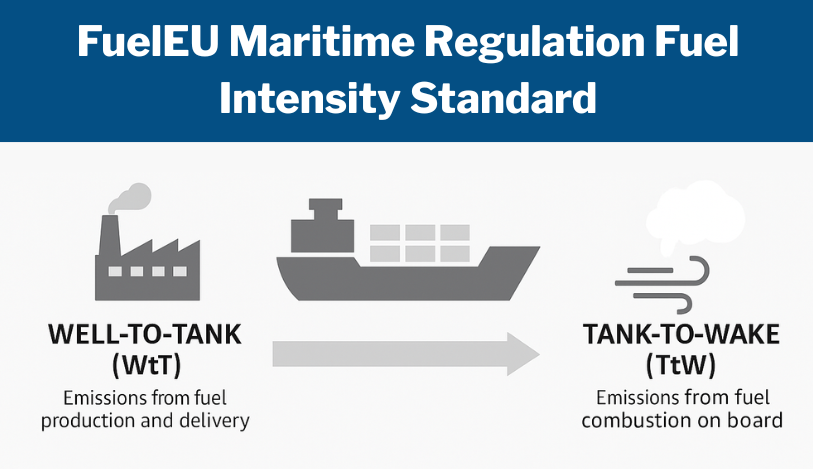
FuelEU Maritime Regulation – Fuel Intensity Standard
Effective Date
From 1 January 2025, the FuelEU Maritime regulation applies to all voyages that include EU port calls.
The regulation sets a mandatory standard for the greenhouse gas (GHG) intensity of marine fuels, measured on a well-to-wake (WtW) basis. This means both:
Well-to-Tank (WtT): Emissions generated during fuel production, processing, and delivery to the vessel.
Tank-to-Wake (TtW): Emissions generated when the fuel is burned onboard.

Effective from 1 January 2025, the regulation sets a mandatory standard for the greenhouse gas (GHG) intensity of marine fuels, measured on a well-to-wake (WtW) basis.
Key Compliance Requirement
The only way to avoid penalties is to switch to fuels with a lower GHG intensity. Pooling with more efficient vessels will not achieve compliance if all are using conventional fuel oil or diesel.
The annual fuel intensity is assessed per ship, based on:
100% of fuel consumed for intra-European voyages.
50% of fuel consumed for voyages into and out of the EU/EEA.
FuelEU voyage definitions for ocean passages currently match those under the EU ETS.
Penalties and Targets
A penalty applies to any non-compliant balance if the GHG intensity reduction is less than 2% for EU/EEA voyages.
Reduction target rises to 6% after 2030.
Increases progressively to 80% by 2050.
Tip: Operators should start evaluating alternative fuel options and efficiency measures now to prepare for compliance, as targets tighten over time.